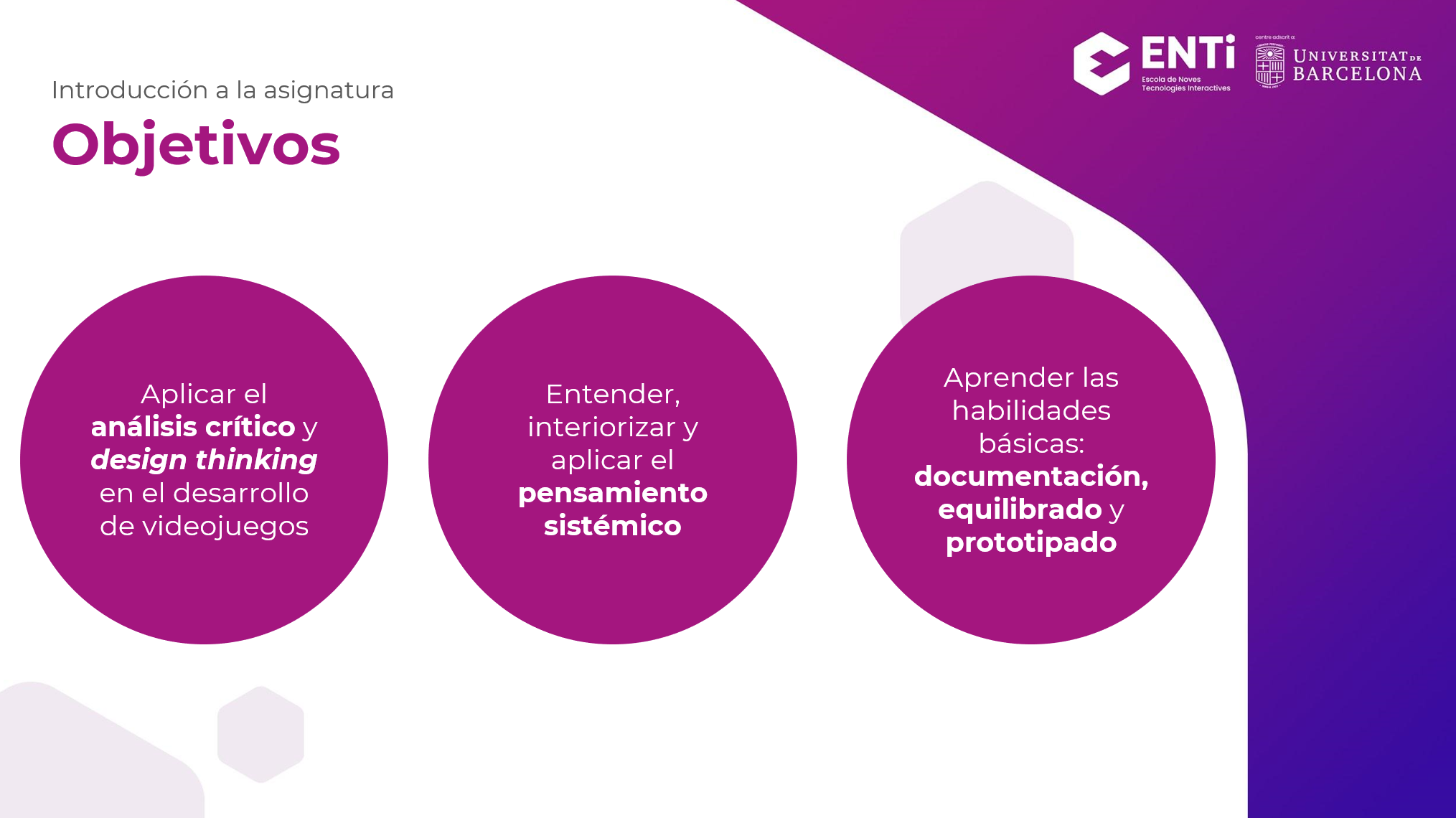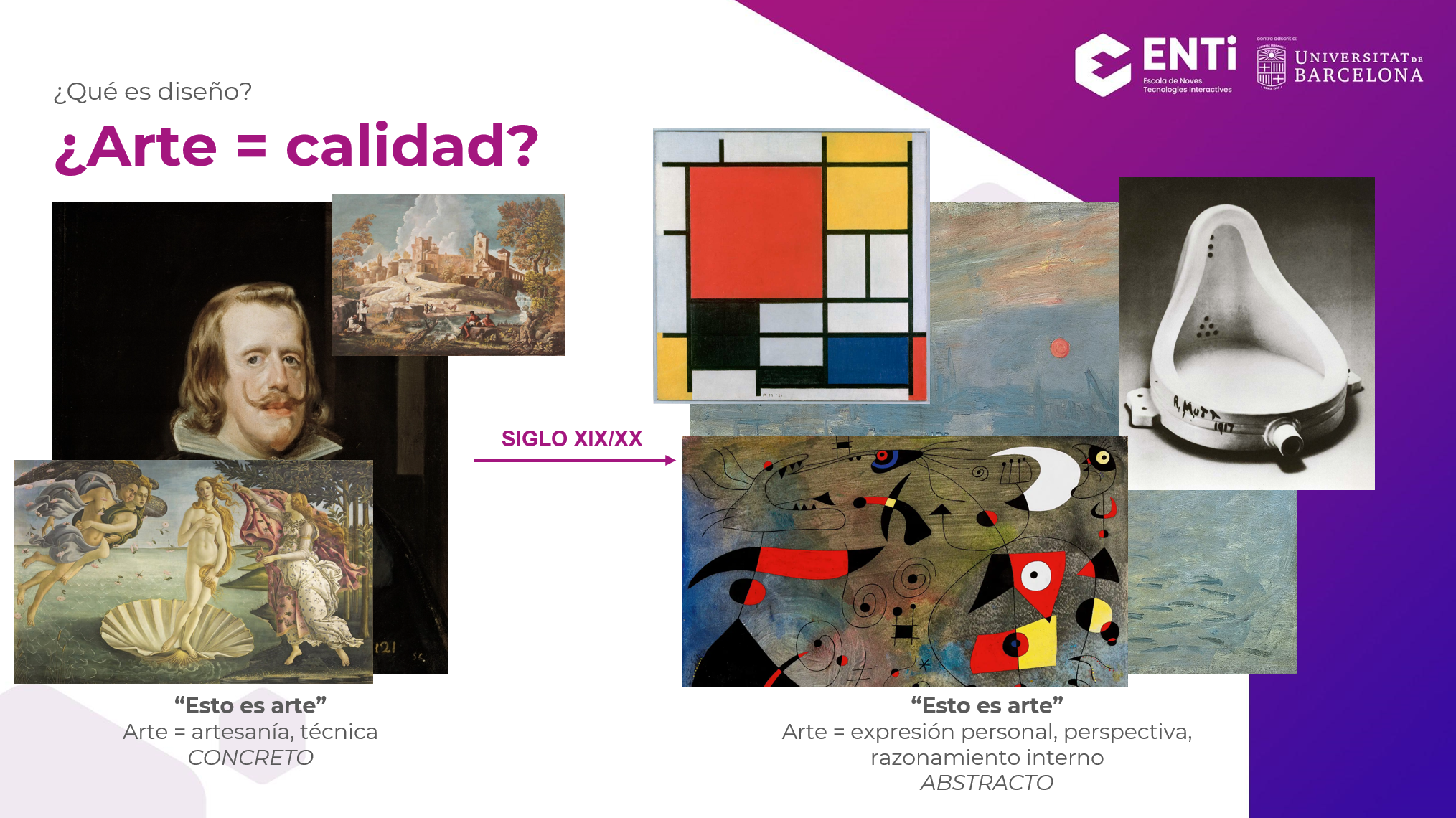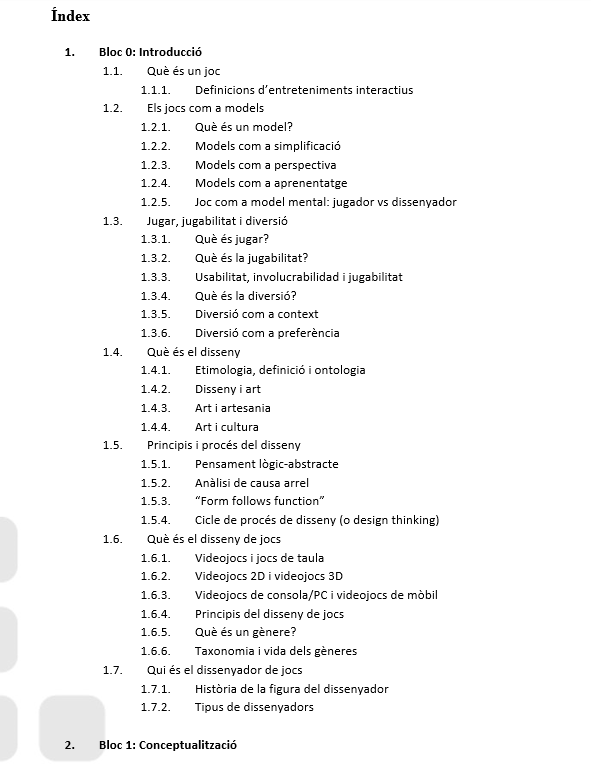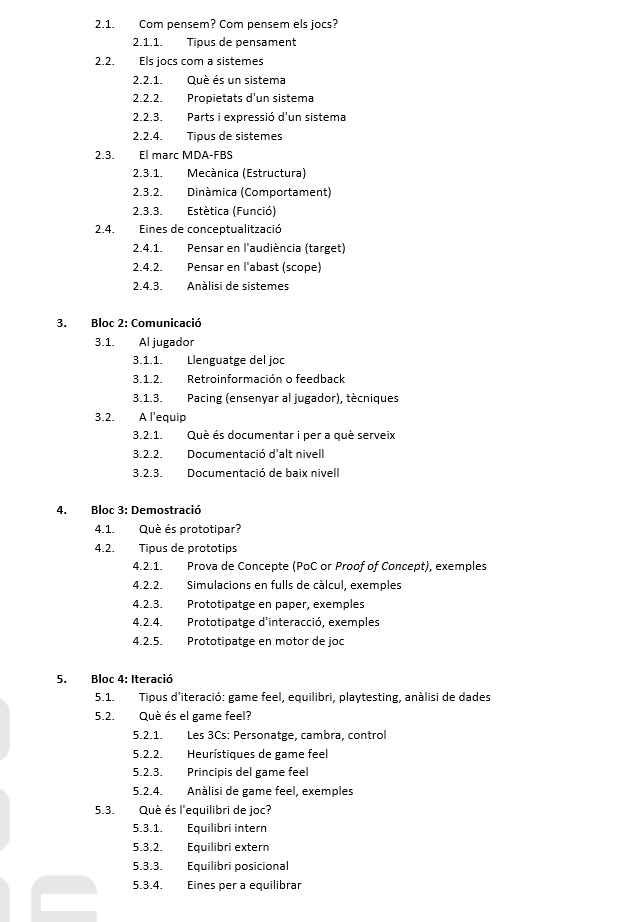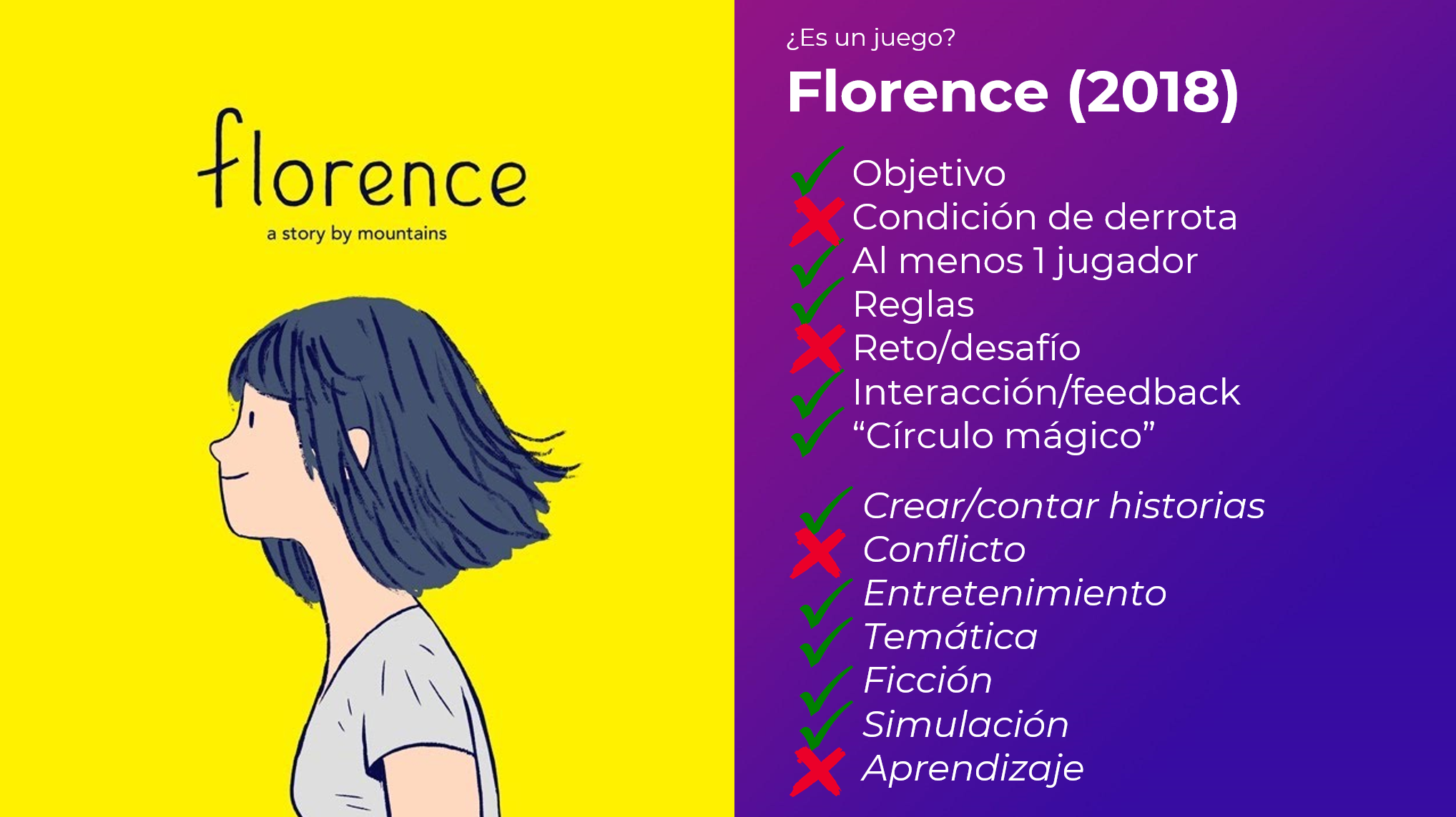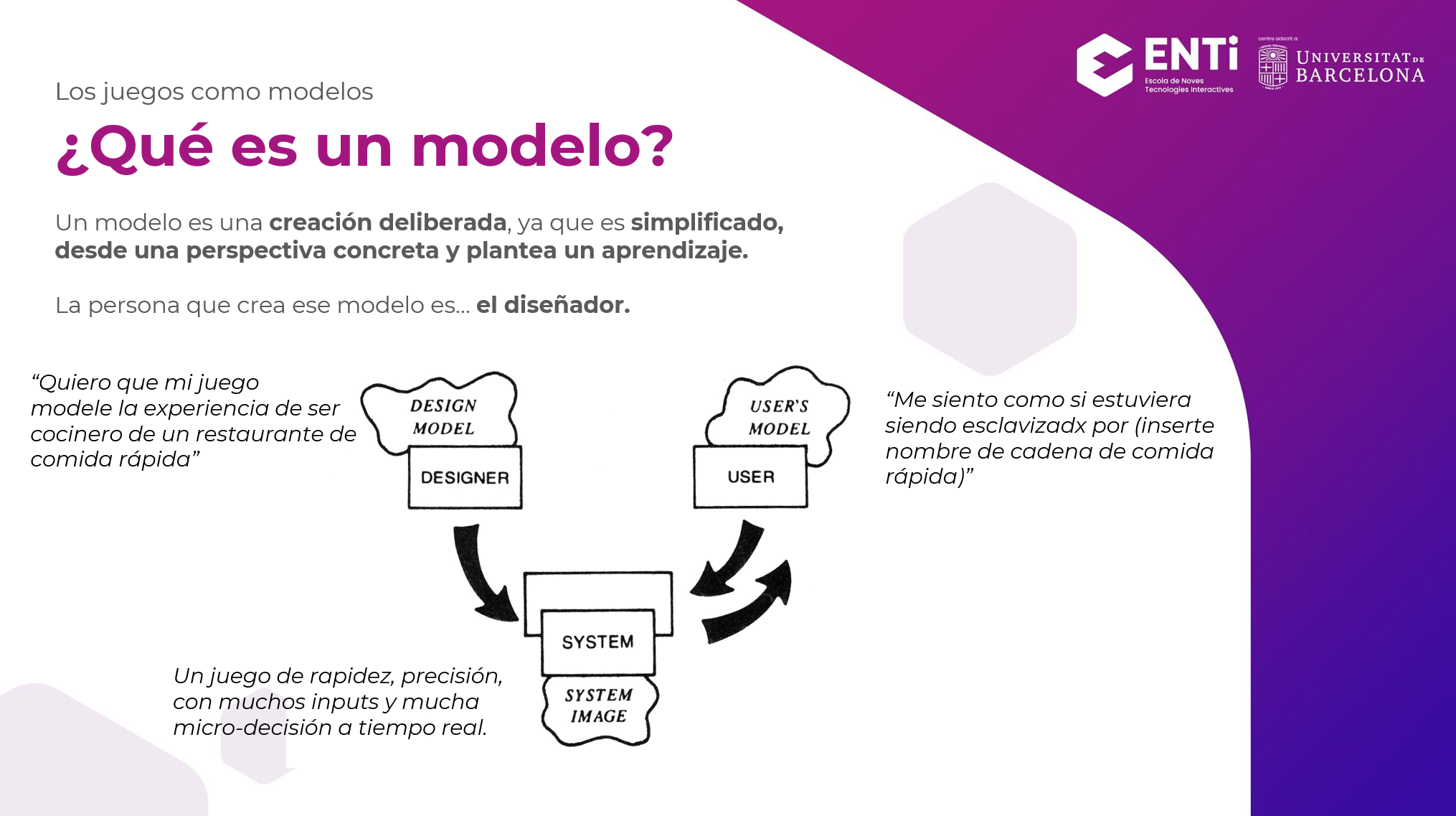This course
Served as a formal introduction to game design for STEM-oriented students. It was heavily approached from a humanities/arts perspective to support the required background (e.g., concepts around game and play, logical reasoning, design, art, culture…)
Practical game design skills were covered as well (systems design, game feel analysis, balancing, prototyping, documentation…)
Curriculum
I redesigned the curriculum from scratch, coordinating with the other game design-related courses in the BSc in Videogames Development degree such as Psychology, UX Design, Advanced Game Design, Level Design to make sure to fill out the gaps and not repeat the same content.
Methodology
At the course start, each student had to “adopt” an already existing game from a given list, meaning they had to play it throughout the whole course. They would use that game in most of their assignments, having to analyze its systems, recreate its pitch, write documentation on it and create extra content.
This method was preferred over creating pitches or games from scratch because this way they could learn how actual games work first, and then use those acquired thought structures in other courses like Game Projects to create their own games.
This course
Served as a formal introduction to game design for STEM-oriented students. It was heavily approached from a humanities/arts perspective to support the required background (e.g., concepts around game and play, logical reasoning, design, art, culture…)
Practical game design skills were covered as well (systems design, game feel analysis, balancing, prototyping, documentation…)
Curriculum
I redesigned the curriculum from scratch, coordinating with the other game design-related courses in the BSc in Videogames Development degree such as Psychology, UX Design, Advanced Game Design, Level Design to make sure to fill out the gaps and not repeat the same content.
Methodology
At the course start, each student had to “adopt” an already existing game from a given list, meaning they had to play it throughout the whole course. They would use that game in most of their assignments, having to analyze its systems, recreate its pitch, write documentation on it and create extra content.
This method was preferred over creating pitches or games from scratch because this way they could learn how actual games work first, and then use those acquired thought structures in other courses like Game Projects to create their own games.
